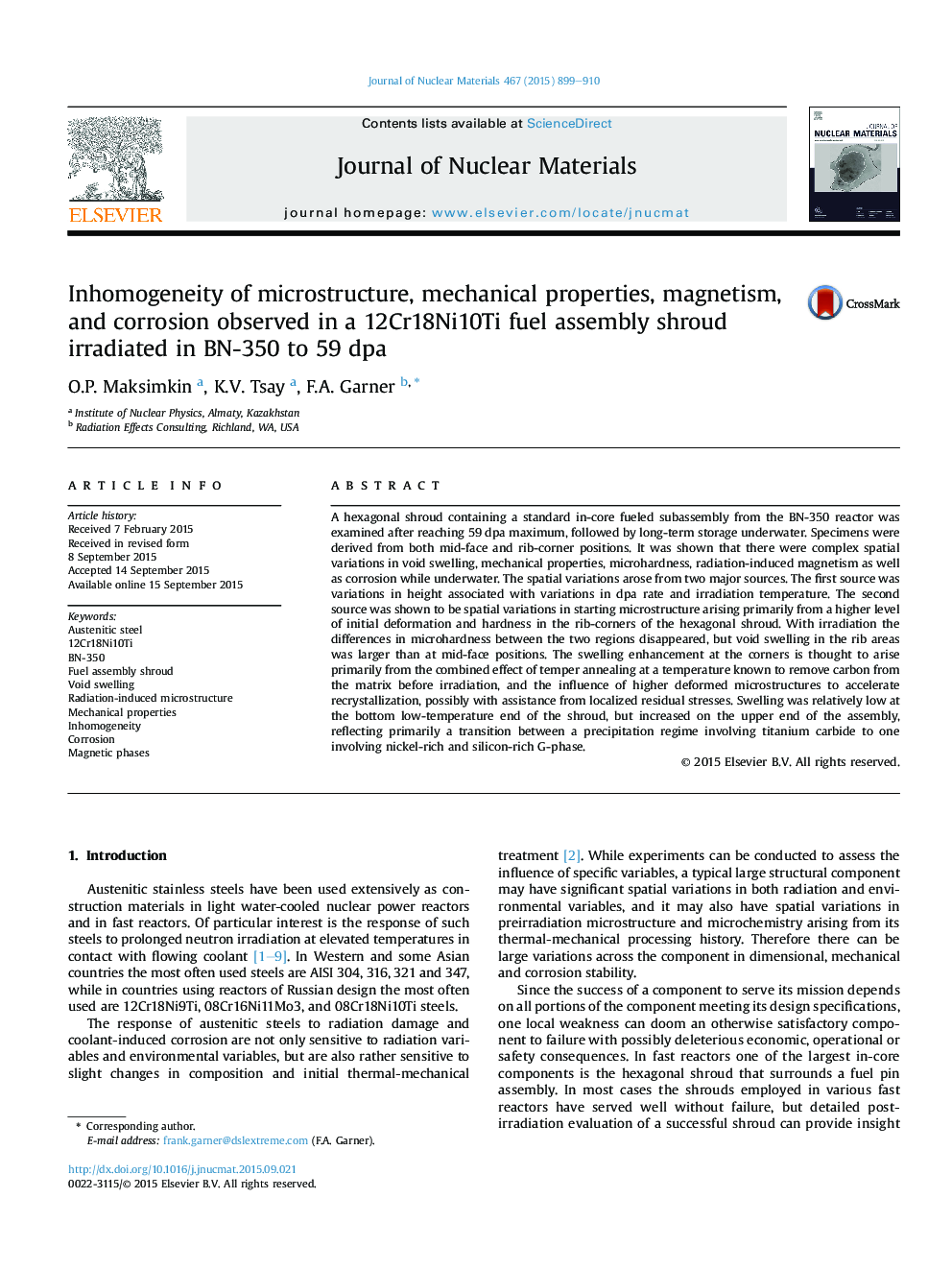| Article ID | Journal | Published Year | Pages | File Type |
|---|---|---|---|---|
| 10644931 | Journal of Nuclear Materials | 2015 | 12 Pages |
Abstract
A hexagonal shroud containing a standard in-core fueled subassembly from the BN-350 reactor was examined after reaching 59Â dpa maximum, followed by long-term storage underwater. Specimens were derived from both mid-face and rib-corner positions. It was shown that there were complex spatial variations in void swelling, mechanical properties, microhardness, radiation-induced magnetism as well as corrosion while underwater. The spatial variations arose from two major sources. The first source was variations in height associated with variations in dpa rate and irradiation temperature. The second source was shown to be spatial variations in starting microstructure arising primarily from a higher level of initial deformation and hardness in the rib-corners of the hexagonal shroud. With irradiation the differences in microhardness between the two regions disappeared, but void swelling in the rib areas was larger than at mid-face positions. The swelling enhancement at the corners is thought to arise primarily from the combined effect of temper annealing at a temperature known to remove carbon from the matrix before irradiation, and the influence of higher deformed microstructures to accelerate recrystallization, possibly with assistance from localized residual stresses. Swelling was relatively low at the bottom low-temperature end of the shroud, but increased on the upper end of the assembly, reflecting primarily a transition between a precipitation regime involving titanium carbide to one involving nickel-rich and silicon-rich G-phase.
Related Topics
Physical Sciences and Engineering
Energy
Nuclear Energy and Engineering
Authors
O.P. Maksimkin, K.V. Tsay, F.A. Garner,
